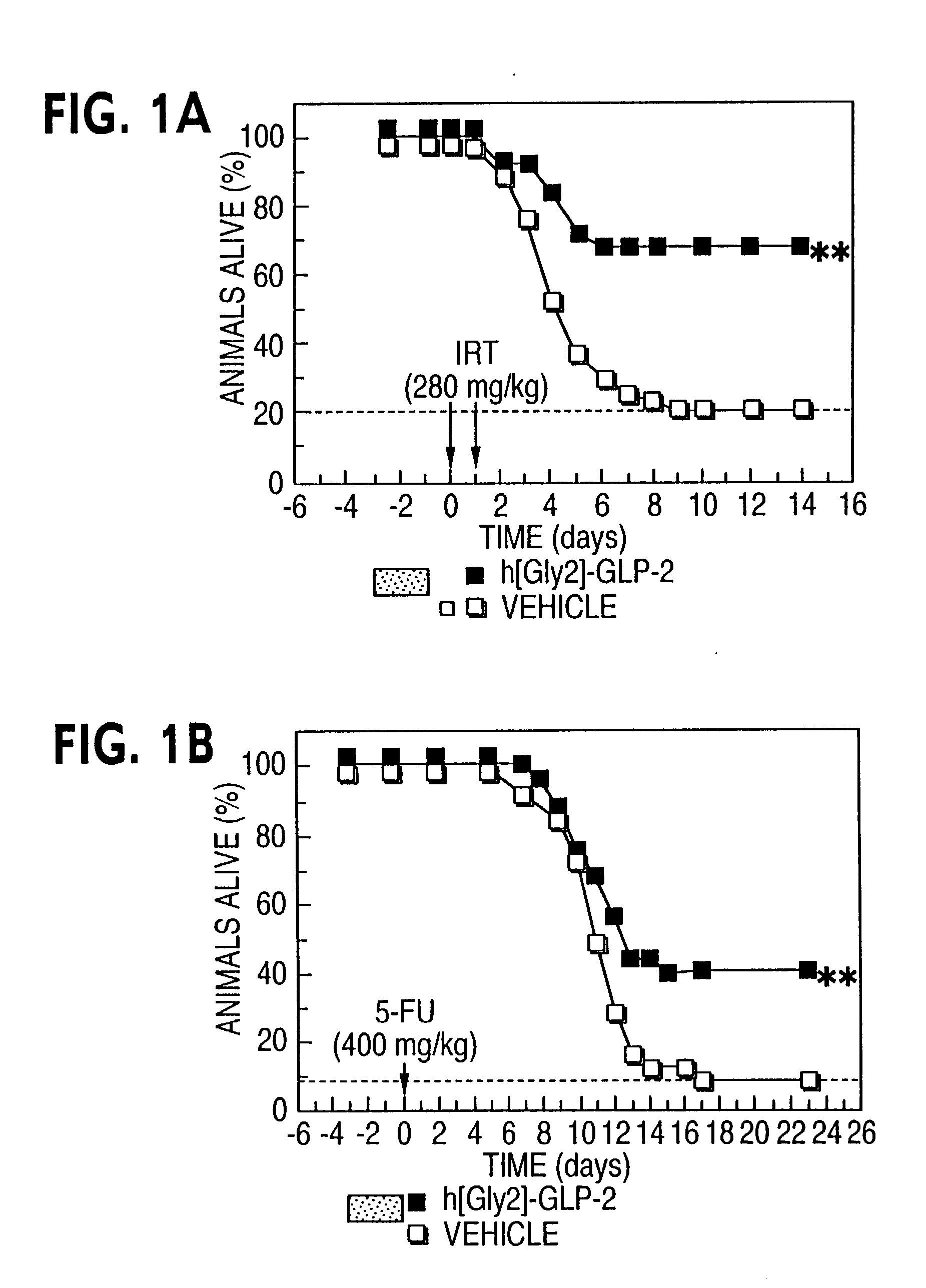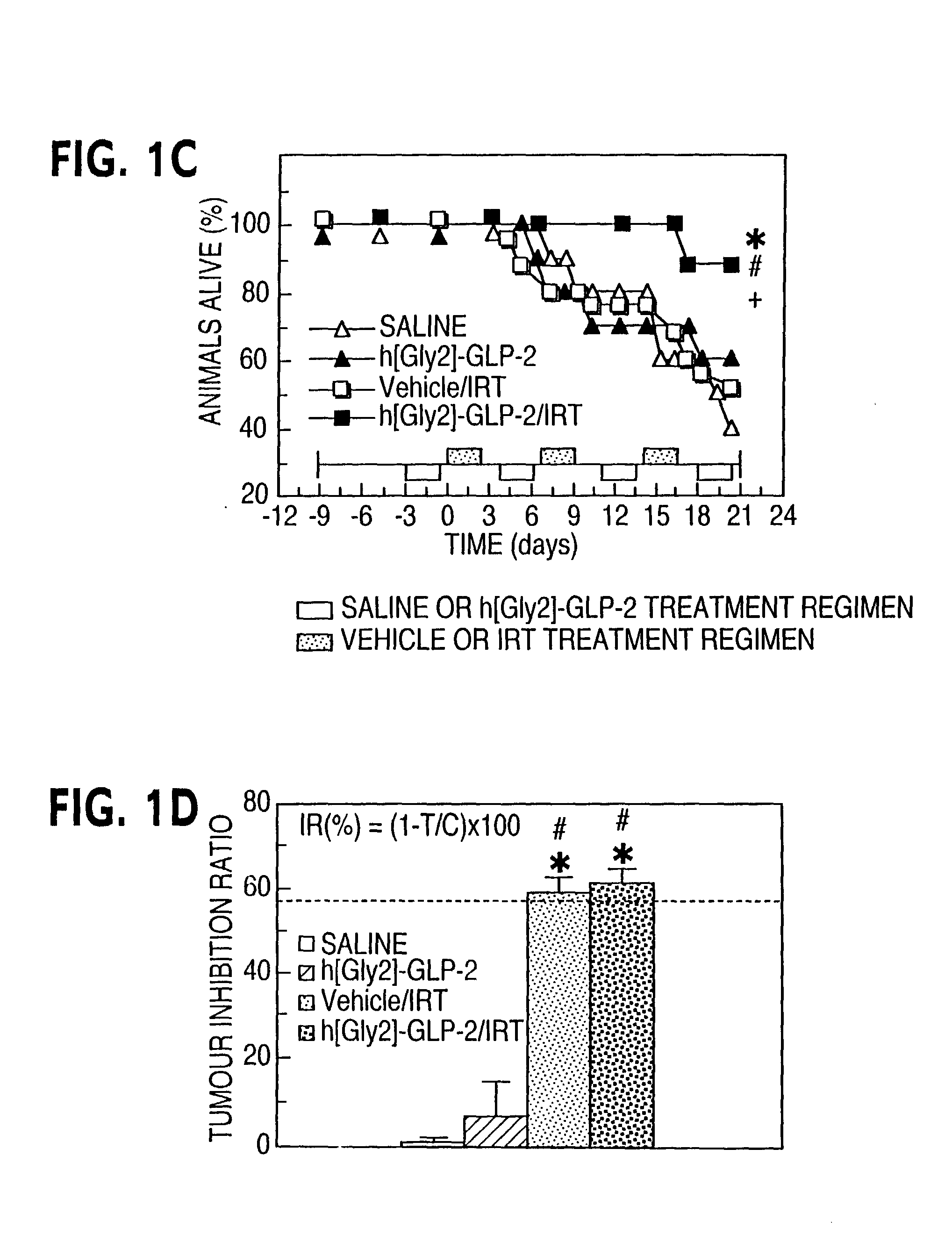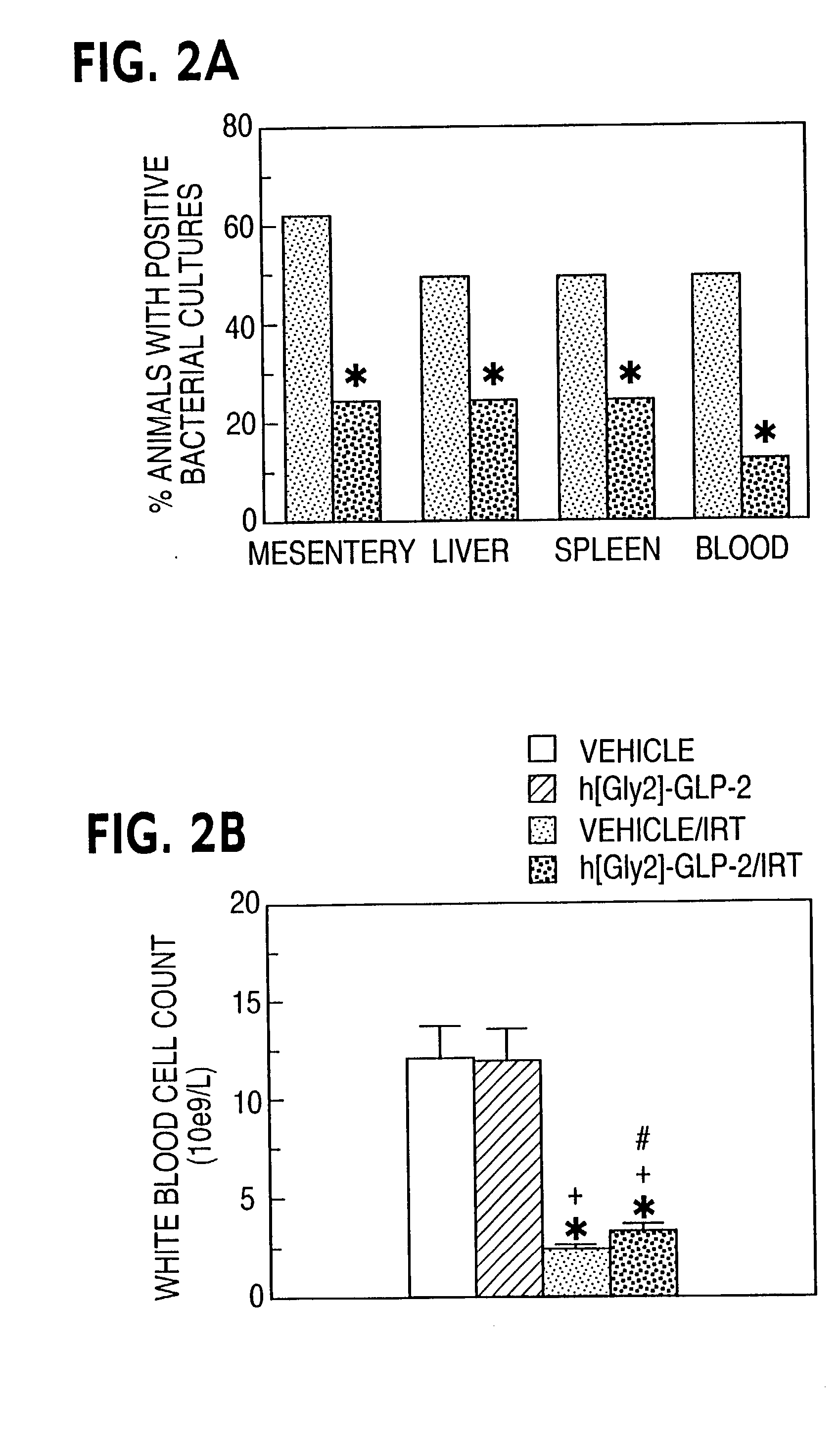Chemotherapy treatment
a chemotherapy and treatment technology, applied in the field of chemotherapy treatment, can solve the problems of affecting the treatment effect of patients with neoplastic disease, limiting the dose and treatment of chemotherapeutic agents, and affecting the treatment effect of susceptible patients
- Summary
- Abstract
- Description
- Claims
- Application Information
AI Technical Summary
Benefits of technology
Problems solved by technology
Method used
Image
Examples
example 2
[0057] Effect of GLP-2 Receptor Activator on Bacteremia and Leucocyte Count Following Chemotherapeutic Administration
[0058] This example shows the efficacy of GLP-2 receptor activator in reducing bacteremia and increasing white blood cell count after chemotherapeutic treatment. As chemotherapy administration may be associated with increased intestinal permeability and bacterial septicemia, bacterial infection in chemotherapy-treated mice was assessed. h[Gly2]-GLP-2-treated mice exhibited a significant reduction in bacterial culture positivity in all organs examined 96 hrs following irinotecan administration (FIG. 2A, P<0.05 for saline versus h[Gly2]-GLP-2 after irinotecan. A significant leukopenia was observed in mice following irinotecan treatment. Mean white blood cell count was modestly but significantly higher in h[Gly2]-GLP-2-treated mice (FIG. 2B).
[0059] The significant reduction in chemotherapy-associated mortality in h[Gly2]-GLP-2-treated mice may be explained in part by the...
example 3
[0060] Effect of GLP-2 Receptor Activator on Crypt Loss After Chemotherapy Treatment
[0061] This example describes the histological consequences of h[Gly2]-GLP-2 action in the setting of chemotherapy. The crypt compartment of irinotecan-treated mice were analyzed. Morphometric analysis revealed a significant reduction in both the number of crypts and in the number of cells within each crypt in the small and large intestine following irinotecan (FIGS. 3A-D). h[Gly2]-GLP-2 significantly reduced the rate of crypt loss in the jejunum (FIG. 3A) and restored crypt cell number 96 hrs following irinotecan (FIG. 3B). Similarly, h[Gly2]-GLP-2 pretreatment prevented crypt loss and enhanced crypt cell number in the colon (FIGS. 3C, 3D).
[0062] The initial observation that GLP-2 exerts trophic actions in the intestinal mucosa was largely attributed to stimulation of crypt cell proliferation, Drucker, D. J. et al., Proc. Natl. Acad. Sci. USA. 93: 7911-7916, 1996; Tsai, C.-H. et al., Am. J. Physiol....
example 4
[0063] Temporal and Spatial Analysis of Crypt Apoptosis Following Chemotherapeutic Injury
[0064] The purpose of this example is to understand the mechanisms by which h[Gly2]-GLP-2 protected the cells underlining the crypt compartment of the small and large intestine from irinotecan-induced injury. A temporal and spatial analysis of apoptosis in the crypt compartment was initially performed. Accordingly, pluripotent stem cells (SC) within the crypt compartment are thought to reside at cell positions 3-5 in the small intestine, and at positions 1-3 in the colon, while the clonogenic potential stem cells (CPSC) reside at positions 6-8 in the small intestine, and at positions 5-7 in the colon. Potten, C. S. et al., Br. J. Cancer 78: 993-1003, 1998; Ijiri, K. et al., Br. J. Cancer 47: 175-85, 1983.
[0065] Based on the above information, a positional topographical assessment of apoptosis within the crypt compartment was performed. h[Gly2]-GLP-2 pretreatment significantly reduced apoptosis i...
PUM
| Property | Measurement | Unit |
|---|---|---|
| time | aaaaa | aaaaa |
| time | aaaaa | aaaaa |
| time | aaaaa | aaaaa |
Abstract
Description
Claims
Application Information
 Login to View More
Login to View More - R&D
- Intellectual Property
- Life Sciences
- Materials
- Tech Scout
- Unparalleled Data Quality
- Higher Quality Content
- 60% Fewer Hallucinations
Browse by: Latest US Patents, China's latest patents, Technical Efficacy Thesaurus, Application Domain, Technology Topic, Popular Technical Reports.
© 2025 PatSnap. All rights reserved.Legal|Privacy policy|Modern Slavery Act Transparency Statement|Sitemap|About US| Contact US: help@patsnap.com



